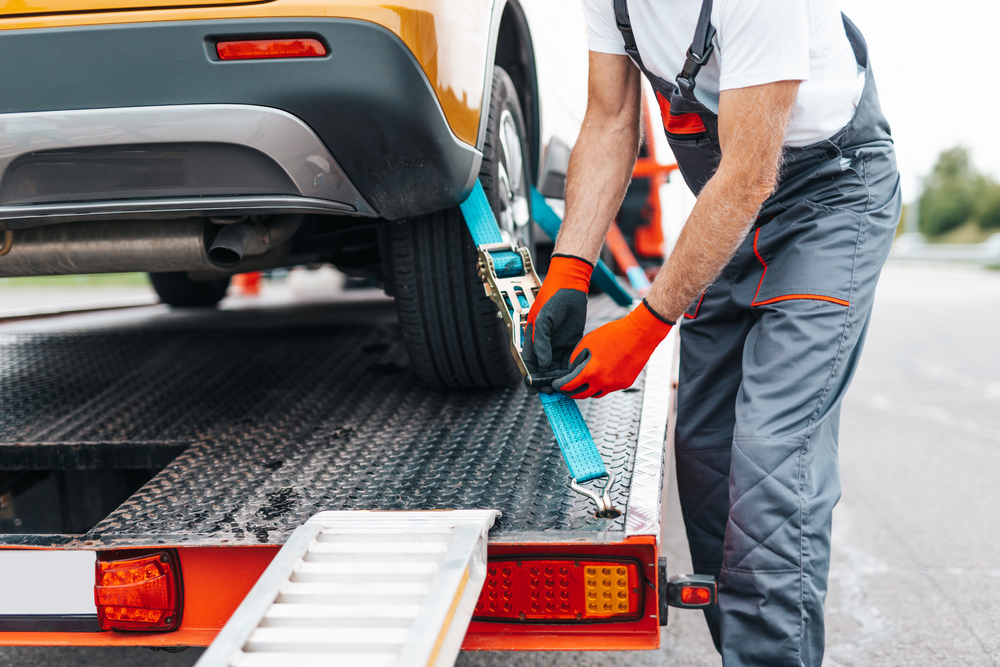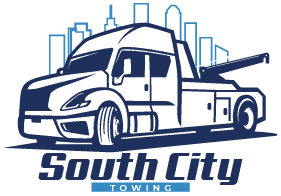Emergency Towing Checklist for Perth Drivers: What to Do When Your Car Breaks Down

Stranded on the freeway. Your engine cuts out without warning. Phone at 20%. Not a single car stops. No idea what to do next. You fumble through the glove box. No flashlight, no tow truck number, no plan. Feels daunting, right?
This is exactly why every Perth driver needs an emergency towing checklist!
This guide is your lifeline. You’ll learn how to prepare for emergency towing, what to do during a roadside breakdown, and how to safely call for a professional towing service in Perth, even in the middle of the night.
We’ve even included a free, downloadable emergency towing checklist. Save it to your phone or glove box and be ready for anything, anytime.
7-Step Emergency Towing Checklist Every Perth Driver Needs
To get you back on track fast, follow this 7-step guide whenever you face a roadside emergency. It’s your tow checklist for a quick, stress-free rescue in Perth.
By printing or saving this checklist, you’ll have all the steps on hand. Now, let’s work through each step:
Part I: Pre‑Emergency Prep
Step #1: Gather Essential Documents & Contacts
Before anything else, make sure you have key documents and phone numbers ready. So that you won’t waste precious minutes hunting for paperwork:
- Driver’s license, vehicle registration & insurance.
These prove ownership and coverage. Store them in your glove box or a waterproof folder. Take a quick photo of each with your phone camera and back them up to the cloud.
- Emergency contacts list.
Write down (or store in your phone) key contacts: family or friends, workplace, and South City Towing. Save our number 0492 013 846 in your phone now. Label it clearly.
- Roadside assistance info.
If you have an auto club or roadside membership, note the membership number and phone. It can speed up service.
Step #2: Pack Your Safety Gear
If you ever have to stop on the highway, having the right safety kit is a lifesaver. Your kit should include:
Item | Purpose & Notes |
High‑visibility vest/tape | Wear before exiting the car—especially at night—to ensure other drivers see you. |
Warning triangles/cones | Place one ~20 m and another ~50 m behind your vehicle on freeways to alert oncoming traffic. |
Flashlight/torch | Essential for night breakdowns; keep extra batteries or a rechargeable light for inspections. |
First‑aid kit | Includes bandages, antiseptic wipes, and basic supplies to treat minor injuries on the spot. |
Sunscreen & bottled water | Perth sun can be harsh even in cooler months—protect your skin and stay hydrated during delays. |
Hat & sunglasses | Helps reduce glare and keeps you comfortable while waiting for help on sunny roadsides. |
Step #3: Perform Pre-Trip Vehicle Checks
Regular maintenance can prevent many breakdowns. Before setting out, do a quick tow vehicle pre-trip checklist:
- Tyre pressure & tread – Check all tyres (including spare) for correct inflation and >2mm tread. Low tyres can overheat or burst.
- Oil and coolant levels – Use dipsticks and markers: full oil and coolant mean your engine runs smoothly and stays cool.
- Battery health – Look for corrosion on terminals. If your battery is over 3 years old, consider testing it.
- Lights & signals – Make sure headlights, brake lights, indicators and hazard lights are working. You need them to stay safe if you break down.
- Windshield and wipers – Top up washer fluid and ensure wipers aren’t worn. Poor visibility in rain is a big risk on Perth roads.
Regular maintenance keeps your car reliable and can help you prepare for emergency towing before it happens. (For a deeper dive, check our Types of Towing Services in Perth guide, which also covers tips on vehicle care.)
PART II: Steps to Follow During an Emergency Towing Situation
Step #4: Secure Your Scene
Safety first! Once your car is safely on the shoulder (or the safest nearby spot), do the following:
- Pull over carefully.
Use your mirrors and indicators to exit the flow of traffic. On multi-lane roads, aim for the left shoulder or breakdown lane.
- Turn on hazard lights.
Immediately switch on your flashers to warn other drivers you’re stopped.
- Place warning triangles.
As you exit, put on that high-vis vest and set up your warning triangles or cones. One about 20 m behind your car and another at 50 m (especially on highways). This gives fast-moving Perth traffic plenty of time to see you.
- Stay clear of traffic.
If it’s dangerous to stay inside (e.g. on a busy freeway at night), move everyone (with seat belts on) to a safe area like behind a guard rail or far from the road. Be extra careful if it’s raining or visibility is poor.
Step #5: Document Vehicle Condition
If your car broke down due to an accident or damage, document its condition for insurance and repair. This record helps with insurance claims and prevents disputes about pre-existing damage. Even if it simply won’t start, this is good practice:
- Take photos of all sides of the vehicle.
Capture any dents, scratches or leaks. Snap a clear shot of the odometer reading too.
- Note fluid leaks or damage.
Write down any oil, coolant, or fuel spots under the car. Mention any new dents or panel damage.
- Save photos to cloud or phone gallery.
If your phone dies, having these photos in cloud storage means you can retrieve them later.
Step #6: Tick Off Your Checklist Items
Grab that printed or digital checklist and go through it one by one. It makes even a scary situation feel manageable, and it guides you right up to the point of calling for the tow:
- Double-check your phone charge.
You’ll need it to call for help. If it’s low, connect it to a car charger or power bank immediately.
- Ensure location services are on.
Apps like Google Maps or Apple Maps can share your GPS pin accurately with the tow operator.
- Review what you’ve done.
Go over Steps 1-5 quickly to make sure nothing was missed. Every box ticked means one less thing to worry about.
Step #7: Contact South City Towing
Now it’s time to call in the pros. At South City Towing, we offer 24/7 fast towing services in Perth. Just call us and we will be with you in no time. Here’s how to streamline the call:
- Call 0492 013 846 or book online.
Our team is ready for emergency calls around the clock.
- Give your exact location.
Share your GPS pin or a clear landmark. For example: “We’re on the Mitchell Freeway, 3 km past Curtis Road, heading south.” Clear directions get the right truck to you faster.
- Describe your vehicle and situation.
Let us know the make, model and colour of your car, and what happened e.g. “engine stalled” or “flat tyre”. Tell us if there are any hazards or if someone is injured.
- Mention any special requirements.
For instance, if you have a low-clearance sports car, a heavy SUV, or a caravan, we’ll send the proper equipment like a flatbed tow truck.
- Stay on the line briefly.
Our dispatcher can confirm details or give you safety tips until help arrives.
Post-Tow Guide: What to Expect After Your Vehicle Has Been Towed
Once you’re hooked up to a tow truck, the job isn’t quite over. Here’s what happens next:
Unloading & handover
We carefully drive your vehicle to our yard or your chosen destination. When we arrive, the driver will unhook your car safely. You’ll go through a brief handover where you sign a delivery form or provide ID. We’ll review the condition of the vehicle (based on your earlier photos) and note any new damage.
Repair shop coordination & storage
If your car needs fixing, we can tow it to your preferred mechanic or suggest reputable local garages.
We’ll coordinate with the repair shop to drop off your car. If your car must be stored temporarily (e.g. if parts are on order), we have secure facilities and will keep you informed.
Review & rate your experience
We aim to turn a stressful moment into a smooth experience. After the job, you’ll receive a survey or invitation to rate South City Towing. Your feedback not only helps us improve but also helps other Perth drivers choose a trusted tow service.
Need Emergency Towing in Perth? We’re Available 24/7!
South City Towing is standing by to rescue you, any time of day or night. Our experienced tow team will get you moving again safely and quickly.
Contact us today for a Quick Help
Don’t let a breakdown ruin your day or night. No more wait for hours.
Download Free Emergency Towing Checklist Here
FAQs
How do I prepare for an emergency tow in Perth?
Keep an emergency kit in your car. Include a high-vis vest, warning triangles, flashlight, first-aid kit, and bottled water. Also, store essential documents (license, rego, insurance) in your glove box. We recommend running basic vehicle checks (tyres, oil, battery) before any long trip. Save our number ‘0492 013 846’ for 24/7 towing service.
What should I do if my car breaks down at night?
Safely pull over to the roadside or parking shoulder. Switch on your hazard lights immediately. Put on a reflective vest and set warning triangles about 20 m and 50 m behind your vehicle to alert other drivers. Stay inside the car if it’s very dangerous outside. Then call South City Towing for assistance right away.
Does my car insurance cover towing services?
It depends on your policy. Some comprehensive or roadside-assistance insurance plans cover towing costs (fully or partially), especially after an accident. Others may only cover a flat rate or not at all. Always check your policy. If you have coverage, South City Towing can work with you and provide documentation needed for your insurer.
How long will the tow truck take to arrive?
Response time can vary by location and traffic, but South City Towing strives to reach you as fast as possible. In Perth metro areas, we arrive within 30 minutes or less for emergencies. When you call, give us your exact location (GPS coordinates if possible) and stay on the line so we can dispatch the nearest available truck immediately.
What types of towing services do you provide?
We offer a full range of towing services in Perth: emergency towing, roadside assistance (battery jump-starts, flat tyre changes, fuel delivery), car and truck towing, motorcycle towing, heavy-duty towing, and more.

